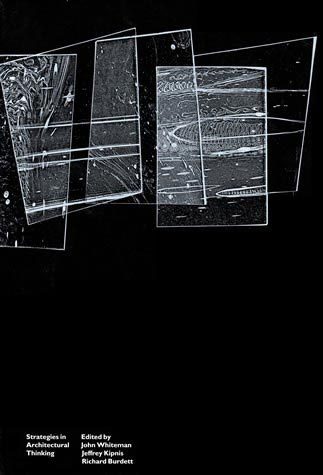Fifteen young professors of architecture were asked to present papers which demonstrated how they problematized architecture for themselves. Each author invited a respondent. The papers were read formally, and then written responses were given. Papers were presented by Ann Bergren, Aaron Betsky, Jennifer Bloomer, Beatriz Colomina, Bejamin Gianni, Douglas Graf, Michael Hays, Catherine Ingraham, Jeffrey Kipnis, Mark Linder, Robert McAnulty, Mark Rakatansky, Robert Segrest, John Whiteman, and Mark Wigley. Responses were given by Donald Bate, Giovanna Borradori, Robert Cheatham, Durham Crout, Timothy Culvahouse, Peggy Deamer, Silvia Kolbowski, Sanford Kwinter, Joan Ockman, John Rajchman, John Welchman, Cornel West, and Elysabeth Yates-Burns. This work was published as an edited volume of papers on contemporary architectural theory, Strategies in Architectural Thinking (MIT Press, 1992). Excerpts from the papers are presented below.
“. . . the Timaeus constructs the chora as absolutely passive. Back before the making of a cosmos out of the disordered universe, the chora use to shake, in the manner of a winnowing basket, displacing the four elements to a different region of herself. But this movement is emphatically prearchitectural, in the ‘absence’ of the cosmic architect, before his ‘schematization’ by form and number.”
Ann Bergren, Architecture Gender Philosophy
“[Architecture] stands between the unpresentable and us.”
Jennifer Bloomer, A lay a stone a patch a post a pen the ruddyrun
“The object has as much authority over him [Loos] as he over it. . . . He is not simply an author.”
Beatriz Colomina, Intimacy and Spectacle
“It is my thesis that a rigorous antihumanist trajectory can be found, historically, within modernism, but that its consequences proved less desirable than current antihumanists might hope.”
Michael Hays, Inscribing the Subject of Modernism
“Architecture approaches writing—writing approaches architecture—in the landscape that lies beyond their respective inscriptions (although their respective inscriptions can never be transgressed).”
Catherine Ingraham, The Burdens of Linearity
“The moral question for today’s architecture: when is it right to do something wrong? This is not the pleasure of freedom, but the anxiety of freedom that the architect must integrate into and tolerate in his design process. To interrogate the groundings of morality is, at least initially, demoralizing.”
Jeffery Kipnis, Aphorisms Around and About Architecture in the Manner of Nietzsche
“There is no ‘mute’ architecture.”
Mark Rakatansky, Spatial Narratives
“To withhold a theory of urbanism is to expose again the subversive textuality [of the city]—a rebus—not of Rousseau’s primitive speech but of a different urbanism which is parasitic to the domain of the authorized.”
Robert Segrest, Frank Lloyd Wright at the Midway
“Art may (appear to) cause revision to strike anywhere.”
John Whiteman, Do You See What I Mean?”

